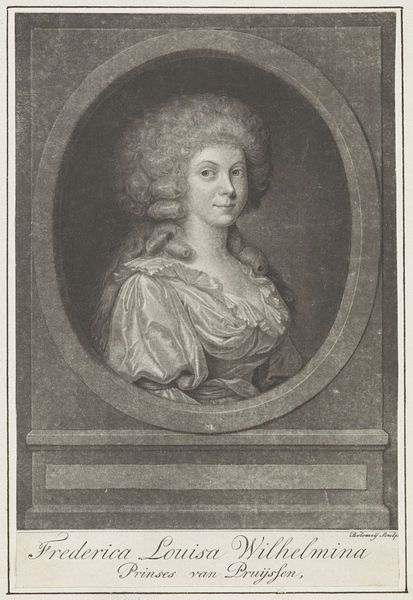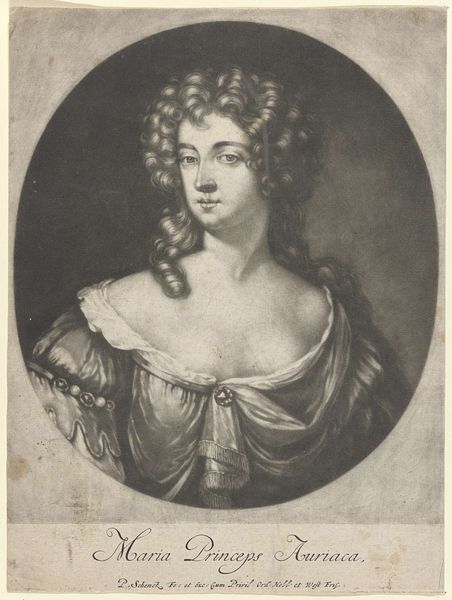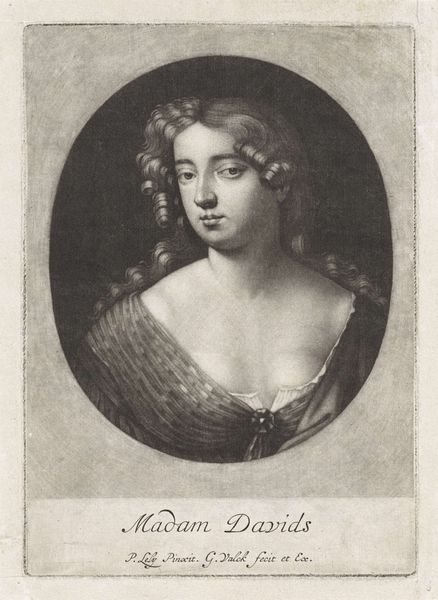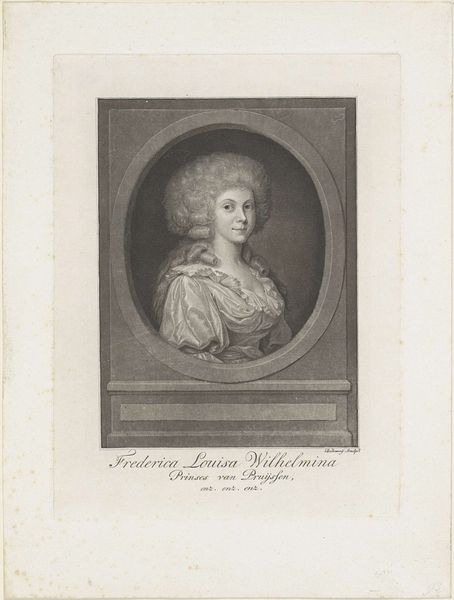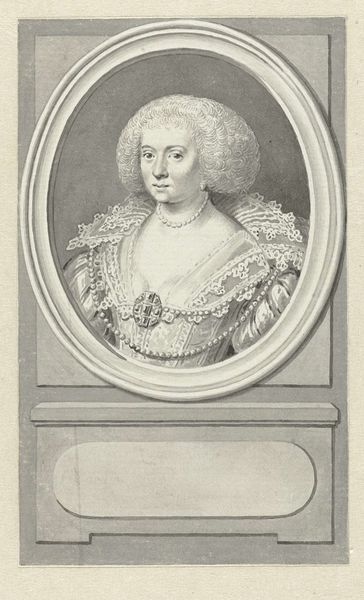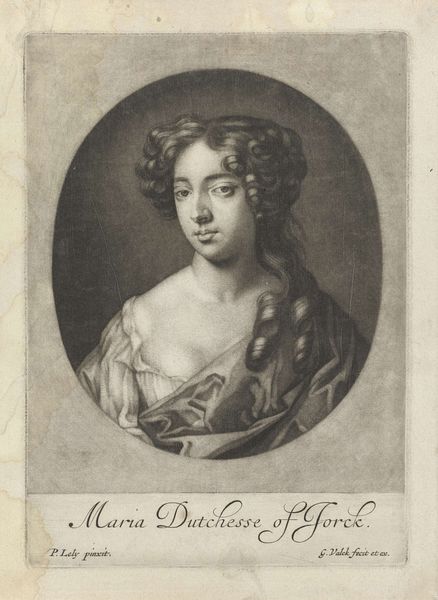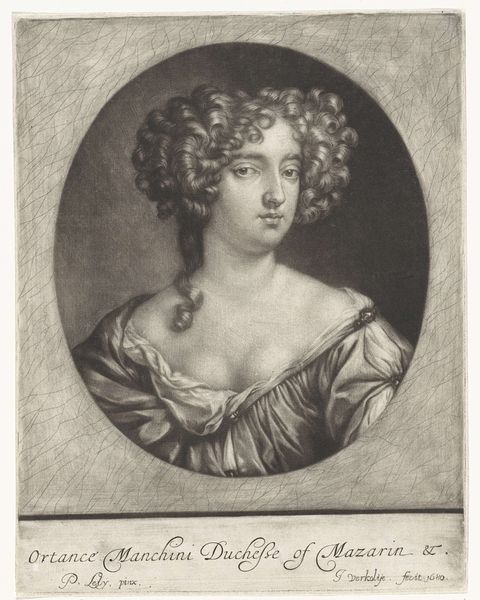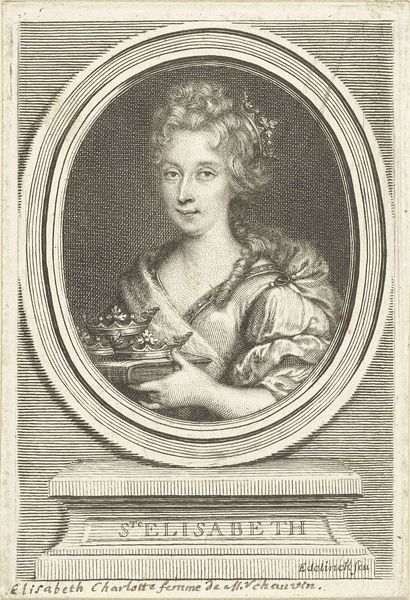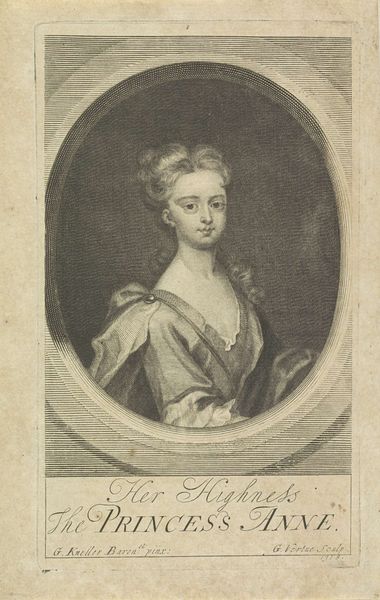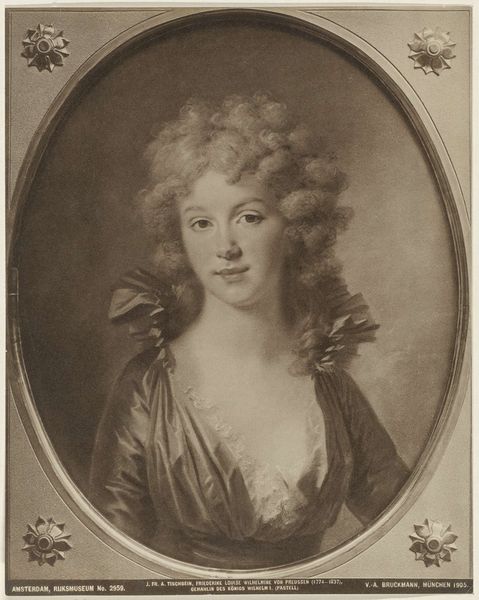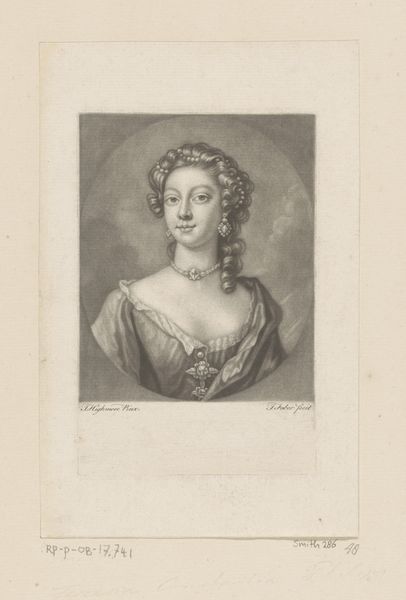
Portret van Isabelle van Sayn-Hachenburg-Kirchberg 1790 - 1819
0:00
0:00
benjaminsamuelbolomey
Rijksmuseum
engraving
#
portrait
#
pencil drawn
#
neoclacissism
#
19th century
#
line
#
history-painting
#
engraving
#
realism
Dimensions: height 249 mm, width 175 mm
Copyright: Rijks Museum: Open Domain
Curator: This engraving from between 1790 and 1819, housed here at the Rijksmuseum, is a portrait of Isabelle van Sayn-Hachenburg-Kirchberg by Benjamin Samuel Bolomey. Editor: The first thing that strikes me is the delicacy of the lines. Despite the formal pose, there's an incredible softness to her features and hair. Curator: Indeed. And it is important to remember that during this period portraits served as significant visual signifiers of status, power and lineage, especially for women in positions of nobility like Isabelle. How might the composition reinforce these ideas? Editor: Well, consider the oval frame, a traditional format that invokes classical medallions. It subtly alludes to ancient ideals of beauty and virtue and aligns her image with established iconography of power, and by extension gendered power. However, doesn’t the very act of confining her likeness in this manner reflect constraints placed on women of her rank? Curator: That's a keen observation. It highlights the tensions inherent in portraiture of the time; the representation of individual identity coexisting with societal expectations and gender roles. Her dress and hair are, while fashionable, less overtly opulent than some portraits of the era. Does this choice signal anything about her personal or political positioning? Editor: Perhaps a conscious attempt to project an image of understated authority. During a period of revolution and societal upheaval across Europe, conspicuous consumption would be tone-deaf. Subtlety here serves a purpose: it presents Isabelle as responsible, attuned, and perhaps even empathetic. We see this play out similarly even in modern contexts and images, how much, after all, has changed? Curator: And the text below, which identifies her as a “Regeerende Prinses,” governing princess further reinforces the portrait’s intent of asserting her political legitimacy and historical weight in a turbulent period, making a point about what it meant to have female leadership. Editor: Seeing this engraving invites reflections on women in positions of authority, the power dynamics that influence representation, and the fascinating ways those in the past sought to shape perceptions. Curator: It certainly encourages us to critically examine not only the artistry but also the complex historical, social, and gendered narratives embedded in images like this.
Comments
No comments
Be the first to comment and join the conversation on the ultimate creative platform.
